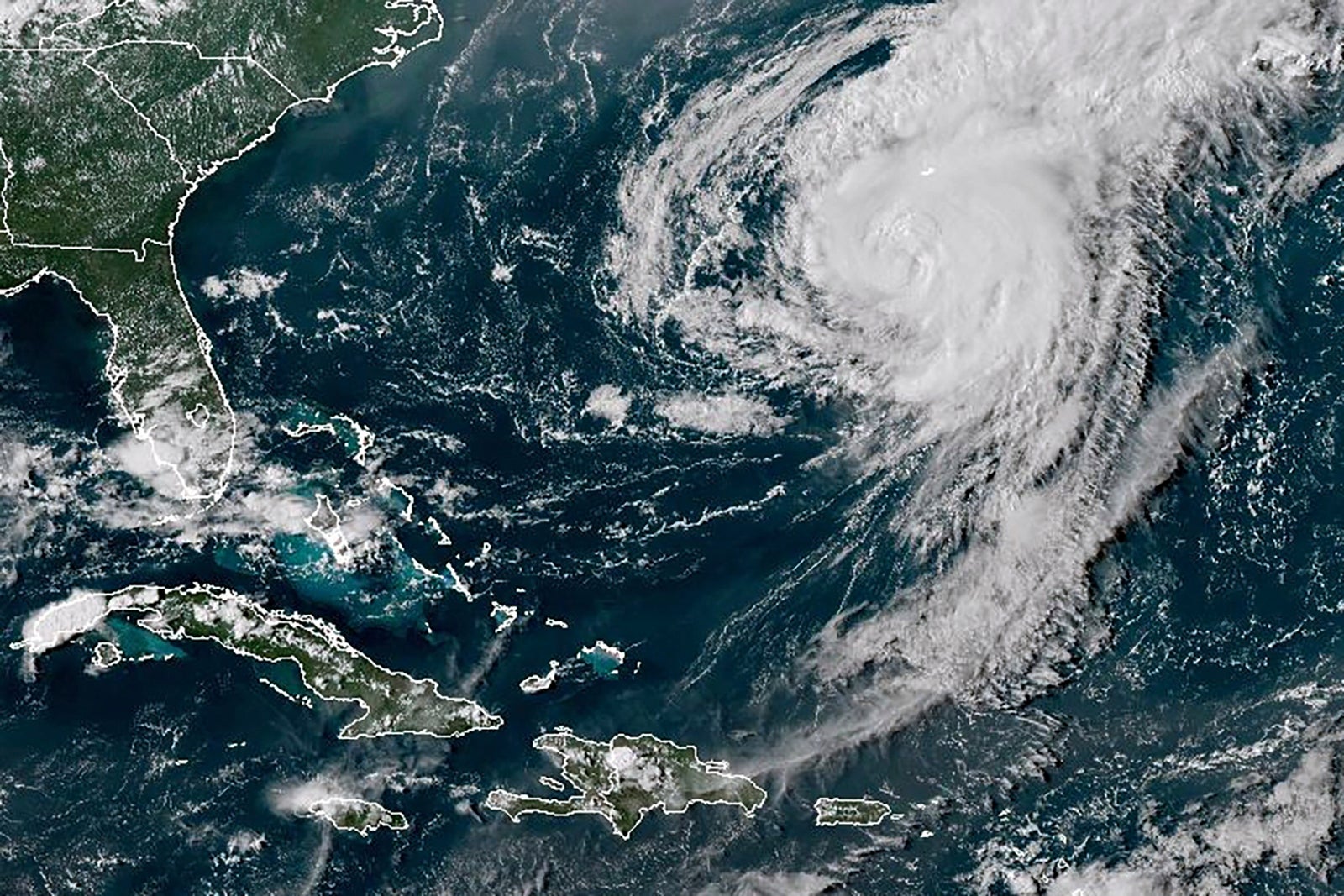Hundreds of miles away, Hurricane Ernesto still affects US beaches with rip currents, house collapse
Hurricane Ernesto was being felt this weekend along much of the U.S. Eastern Seaboard, even with the storm hundreds of miles offshore and crossing Bermuda

Even with the storm hundreds of miles offshore, Hurricane Ernesto was still being felt Saturday along much of the U.S. Eastern Seaboard, with dangerous rip currents forcing public beaches to close during one of the final busy weekends of the summer season.
The storm’s high surf and swells also contributed to damage along the coast, including the collapse of an unoccupied beach house into the water along North Carolina’s narrow barrier islands.
Hurricane specialist Philippe Papin from the National Hurricane Center said Ernesto, which made landfall on the tiny British Atlantic territory of Bermuda early Saturday, remains a “pretty large” hurricane with a “large footprint of seas and waves” affecting the central Florida Atlantic coastline all the way north to Long Island in New York.
“That whole entire region in the eastern U.S. coastline are expecting to have high seas and significant rip current threats along the coast,” Papin said. The National Oceanic and Atmospheric Administration describes rip currents as “powerful, narrow channels of fast-moving water” that move at speeds of up to 8 feet (2.44 meters) per second.
In New York City, officials closed ocean-facing beaches for swimming and wading in Brooklyn and Queens on Saturday and Sunday, citing National Weather Service predictions of a dangerous rip current threat with possible ocean swells of up to 6 feet (1.8 meters). Lifeguards were still on hand, patrolling the beaches and telling people to stay out of the water.
“New Yorkers should know the ocean is more powerful than you are, particularly this weekend,” Mayor Eric Adams said in a statement. “Do not risk your life, or the lives of first responders, by swimming while our beaches are closed.”
The National Weather Service also warned of the potential for dangerous rip currents along popular Delaware and New Jersey beaches, and as far north as Massachusetts, urging swimmers to take “extreme caution” over the weekend.
Further south along North Carolina’s Outer Banks, the National Park Service confirmed the collapse of the house early Friday night in Rodanthe, one of several communities on Hatteras Island. No injuries were reported, the park service reported.
A park service news release said other homes in and near Rodanthe appeared to have sustained damage.
The park service said Friday’s event marks the seventh such house collapse over the past four years along the Cape Hatteras National Seashore, a 70-mile stretch of shoreline from Bodie Island to Ocracoke Island that's managed by the federal government. The sixth house collapsed in June.
The low-lying barrier islands are increasingly vulnerable to storm surges and to being washed over from both the Pamlico Sound and the sea as the planet warms. Rising sea levels frustrate efforts to hold properties in place.
The park service urged visitors this weekend to avoid the Rodanthe beaches and surf, adding that dangerous debris may be on the beach and the water for several miles. A portion of national seashore land north of Rodanthe also was closed to the public. Significant debris removal wasn’t expected until early next week after the elevated sea conditions subside, the park service said.
The National Weather Service issued coastal flooding and high surf advisories for the Outer Banks through early Monday. It also warned this weekend of rip currents and large waves, reaching north into Virginia and Maryland beaches.
In Bermuda, tens of thousands of utility customers lost power on the island as the category 1 storm arrived, with several inches of rain predicted that would cause dangerous flash flooding.
__
Haigh reported from Norwich, Connecticut, and Robertson reported from Raleigh, North Carolina. AP Radio reporter Jackie Quinn in Washington also contributed to this report.